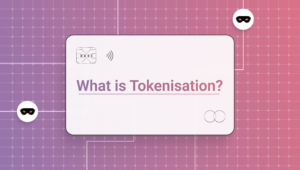Business and their suitable payment method

Finding a way to accept payments more securely and quickly is essential for running your business efficiently.
Due to the pace at which the world is changing now, continuing to use traditional payment methods, such as walk-in bank transfers, cash payments, etcetera, can slow down your business.
However, with the availability of online payment methods, you do not have any constraint of time or location. You can make instant payments at any time from anywhere across the globe.
There are plenty of online payment methods you can choose from, but finding the right one among these wide varieties of payment methods can be challenging.
Omnipay hands out a wise suggestion, integrating a payment gateway service that helps your business accept multiple payment methods in one go.
This guide will discuss the payment method for different use cases — Retail, E-commerce, Saas, and Marketplaces.
Table of Contents
Use Cases and their suitable payment methods
Retail
Recommended: Card terminals, Virtual terminal, NFC tokens, QR codes, and a Mobile app
By accepting only cash and card payments exclusively, you might be turning away existing clients and missing out on opportunities to welcome new customers.
Having a variety of payment methods available is the most efficient option for retailers. In addition, if you have a flexible point-of-sale system, accepting additional payment methods shouldn’t be a problem.
How can virtual terminals prove to be beneficial for a retail business?
Retailers must seize every chance to reach out to new customers, and virtual terminals offer one such possibility.
Adopting virtual terminals helps shops save money by replacing single-purpose card readers, cash registers, and standalone POS terminals with smartphones, tablets, and other standard hardware with payment links.
You may broaden your reach by sending payment links to your clients via social media, SMS, email, and other channels.
When you utilise a typical hardware POS terminal, you can only process one transaction at a time.
When your store’s traffic increases, clients must wait longer to complete their purchases, which may drive some to abandon their purchases.
A critical feature of virtual terminals is establishing as many instances as you require to boost user experiences. Check out our virtual terminal page here.
In what ways can contactless payments reduce in-store queues?
A wide variety of contactless payment methods are in use today, including tap and pay debit and credit cards, NFC tokens, QR codes, Apple Pay, and Google Pay.
There is a double advantage when shops focus on establishing payment technology that facilitates contactless payments.
Retailers who rely more on contactless payment options will delight customers who opt for contactless payment methods and save money on traditional payment terminals.
In-store long queues can prove to be tiresome for the customers and you.
Providing them with NFC tokens, QR code stands, mobile wallet payments help payment go through faster and saves time by eliminating long queues.
When retailers digitise payments, they open the door towards making their business tech-savvy, improving the brand’s consumer experience.
How can a card terminal prove to be profitable for a retail business?
The world has tech evolved to the extent that a significant proportion of consumers do not pay with cash.
It may be a substantial issue if your store’s only payment method is cash. As a result, you will be forced to turn down the customer.
You will accept more on the spot sales and make your customers’ lives easier by installing a card payment machine.
The portable card machines include a chargeable battery, touch screens that use dual connectivity and effortlessly transition between WiFi and GPRS reception.
It allows users to make instant payments with a tap, generate a QR code, or utilise Chip and Pin payment methods.
Customers who pay with a credit card are more likely to overspend than customers paying with cash. It is because people carry a limited quantity of cash with them.
So paying with a credit or debit card allows them to buy more items while in the store. Read more on our card terminal page.
How can a payment gateway expand retail store reach through a website?
You may combine a payment gateway with a shopping cart if your store also has an active website for .elling
Upon clicking check out, the consumer gets redirected to the payment terminal.
The payment terminal offers a wide range of payment options, including credit/debit card payments mobile wallets such as Apple Pay, Gpay, and Samsung Pay, among others.
This option allows consumers to pick the payment method they are comfortable paying.
Also, payment gateways have an in-built dashboard providing insights and analytical reports of all transactions made throughout.
It is also easy to refund your customers. You can view the customer transaction history, search for the customer by name or phone number, open the transaction slip, and click refund.
All the transactions made are secure, fast and reliable, ensuring all the customer payments are protected.
E-commerce
Recommended: Virtual terminal, Payment gateway, QR code, payment links
How does a payment gateway help an e-commerce business enhance sales and accept payment seamlessly?
The easy checkout experience is a must to enhance sales. From a customer’s perspective, a quick and seamless checkout experience is essential.
These capabilities are enabled through payment gateway services, making online buying as simple as possible.
Sometimes, customers make purchases in the spur of the moment. One survey shows that more than 68% of customers abandon their purchases if the checkout procedure is time-consuming and difficult.
However, according to the research, purchases rise to 40% of all online orders if having a convenient payment option.
Payment gateways Integrate with the shopping cart, allow for faster payment processing, and supports numerous payment methods.
It also supports fraud prevention because payment gateways are frequently consistent with security standards such as PCI DSS, ensuring secure transactions.
How does a virtual terminal help e-commerce businesses to expand globally?
A virtual terminal can get employed as an alternative to cash on delivery. Instead of collecting cash, you can email or SMS your consumer a payment link from your payment gateway dashboard or mobile app.
- Customers may quickly and promptly pay for the received item by clicking the link. You may also distribute Payment links through social media.
- To collect money for the products you sell on social media, you can easily embed payment buttons into product postings on Facebook, Twitter, and Instagram.
- The virtual terminal allows you to handle quick refunds and will enable customers to repeat payments if they fail the first time. Providing such an option also adds to the customer.
- Virtual terminals enable you to close purchases without having clients go through additional steps.
- It helps expand your business reach globally by enabling flexible payment options and streamlining the process. Your business is no more confide to a small region.
- You may also share QR codes with consumers via a virtual terminal and allow them to pay using a contactless way by scanning the code and paying.
Saas
Recommended: Payment gateways, Virtual terminal
If you own a growing software-as-a-service (SaaS) firm. In that case, it may seem logical to add payment gateways as your company grows to accept payments smoothly.
You may believe that you require many gateways, including those that serve specific regions worldwide, to get the necessary worldwide coverage.
However, this is not the case; merely one payment gateway can do wonders for your firm. Here’s our dedicated SaaS Payments page.
How can a payment gateway work wonders for a Saas business?
Billing software installation is a time-consuming and challenging operation. In comparison, a payment gateway is a simpler and faster way to access and analyse your transactions.
You may skip complex settings and long integrations and instead have access to a cloud-based system after just a few hours of simple setup.
A SaaS-friendly payment gateway is primarily built for businesses that provide online services on a subscription basis. These are recurring payments and are most likely the foundation of your business strategy.
You may also set up and manage several subscription plans and add promotions and discounts, allowing you to offer a versatile shopping experience to your customers.
Collect and save payment information such as credit card numbers, ACH transfers, and other payment options. You can easily send recurring bills to clients and encourage more sales with discounts and free trials.
Your business gets access to multiple payment methods like mobile wallets, credit/debit card transactions, etcetera.
How does a virtual terminal deem fit for Saas businesses?
As a SaaS firm owner, you work with clients across the globe with little to no chance of face-to-face interaction.
You usually have to accept electronic payments from your customers. This online payment system works best with a virtual terminal capable of handling transactions quickly and smoothly.
There is no need to acquire a domain. With a virtual terminal, you can add products and services to your catalogue and upload them to your social media accounts with embedded payment links.
With a single click on the post, customers can purchase the product and make their payments.
You can utilise text messages to send payment links to your customers, allowing both parties to communicate, bargain, and even pay via two-way texting.
You may also keep track of pertinent consumer information, such as tokenised cards.
The virtual terminal facilitates tracking essential customer information and one-click-refunds using a connected dashboard.
The dashboard provides you with analytical reports and insights that help you make better business decisions.
Using a virtual terminal, you can send invoices and QR codes to your customers by email, SMS, and social chats.
Alternatively, customers can pay by scanning a QR code or clicking on a payment link via email or SMS.
The virtual terminal provides a variety of payment alternatives that can help your business grow, including invoicing, recurring billing, pay by phone, contactless payments, and payment links.
Marketplaces
Recommended: Payment gateway, Virtual terminal, QR codes
As an online marketplace owner, you connect other sellers with buyers. Many of your days will likely include onboarding multiple third parties to sell their products on your platform.
While onboarding many clients and providing each with a payment processor, you must ensure that your payment infrastructure is robust and accessible.
How does the payment gateway help you control fund flow and handle refunds?
Providing online payments to your clients is one of the many steps in developing a marketplace.
A company should support real-time transactions to remain competitive and increase consumer involvement.
You may accomplish this by incorporating a payment gateway as a reseller to your clients.
This solution’s key advantages include automated payment processing and better data security, as well as settlements for your clients.
As a result, these payment gateways have the necessary compliance rules and insurance coverage to keep funds in escrow.
This method incorporates less manual work and more automated work.
You can quickly handle refunds and disputes using the payment gateway’s dashboard.
Responding immediately to consumers will help you reduce losses to a minimum.
How is a virtual terminal beneficial for Marketplaces?
A virtual terminal provides an easy way to process and receive payments.
What’s great about a virtual terminal is that you don’t have to spend money on an actual terminal, and you only need a merchant account.
After that, you can access your virtual terminal from a mobile device or a desktop and accept payments from anywhere.
Furthermore, it offers recurring payments, ensuring that your organisation has a continuous cash flow.
Through the virtual terminal, you can pay and get paid through QR codes, payment links, credit/ debit card payments, mobile wallets, etcetera.
A scalable gateway allows buyers to pay for multiple orders with one payment.
If an order includes goods from different vendors, the payment system automatically splits and distributes it among vendors.
Are you thinking to acquire a payment gateway for your business? Omnipay is always ready to be at your service.
Omnipay makes accepting payments for your online business more accessible than ever. Regardless of the size of your business, we can help you ensure a safe and efficient payment suite, so you can focus on running your business.
To know more, feel free to connect with us at +44 208 103 3846 and email us at: [email protected].



